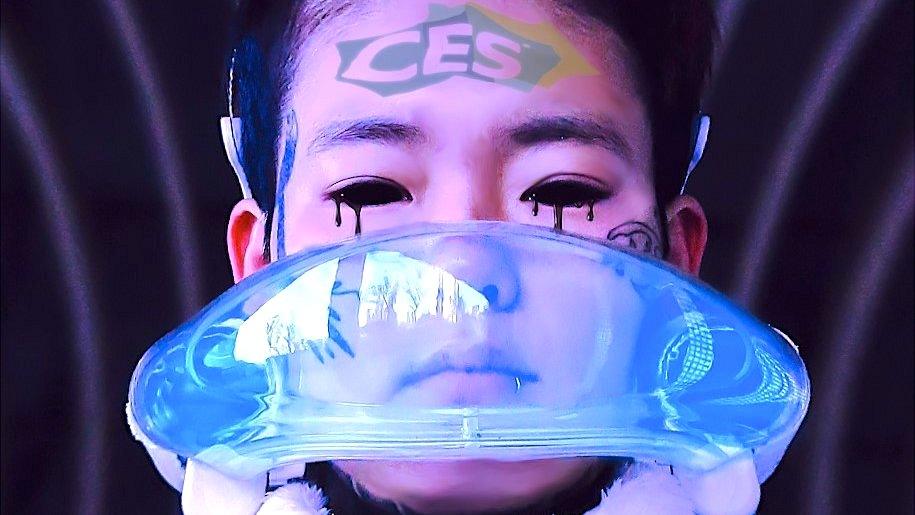CES 2020: Sex tech makes a splash at tech show
- Published
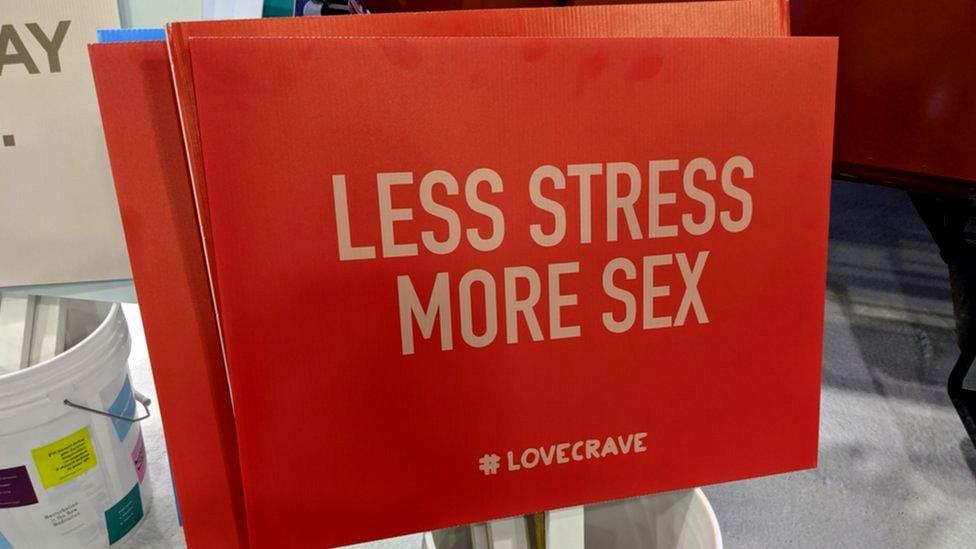
CES has welcomed sex tech this year. But blink and you might miss it.
There are no more than half a dozen stands, and most are tucked away in a far corner of one of Las Vegas's vast conference halls.
They are being hosted under the umbrella of the Health and Wellness zone.
Several feature innovative sex toys, while one - called Pulse - is demoing a dispenser that heats oils and gels.
But while the booths are well away from those of the big brands that dominate the room, their presence still represents a significant shift.
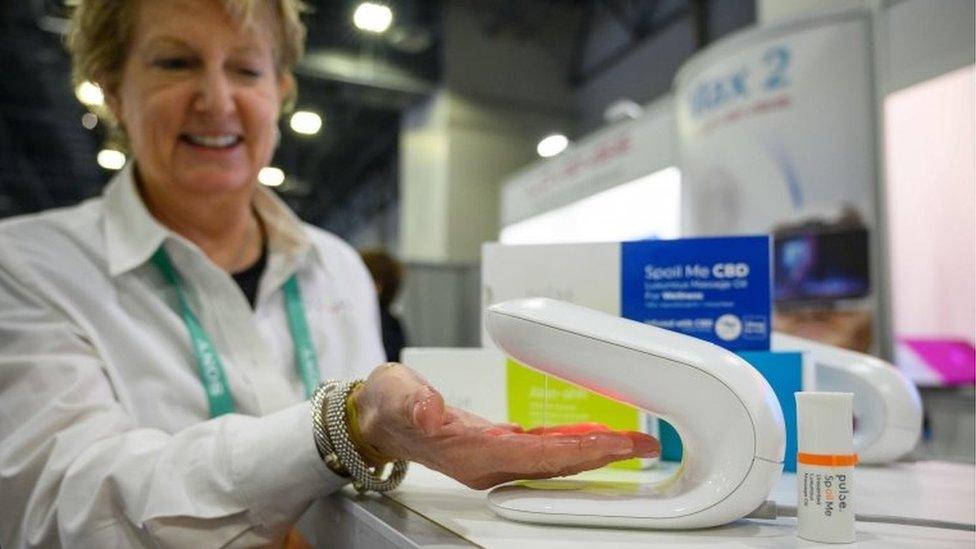
The Pulse Warming Dispenser aims to make it less messy to use lotions and oils
Show organiser the Consumer Technology Association stumbled awkwardly into a storm of sex tech controversy last year.
It first gave an award to, then took it back from the women's sex toy start-up Lora DiCarlo.
By the time the CTA had executed a further U-Turn and given back the prize, it was months after the show had ended.
Following a "healthy dialogue" with the CTA committee, Lora DiCarlo has returned this year.
And this time it has a working product, the Ose, which moves and uses suction but does not vibrate.
Its booth is not in the sex tech corner but instead has a more prime location deeper within the show floor, where it is a beacon of bright yellow.

Ose is the first product from sex tech start-up Lora DiCarlo
The firm's founder, Lora Haddock DiCarlo, points out that its robotic massager has nine intellectual property patents and contains almost 250 parts.
"I think the standard for innovation probably needs to be scrutinised a bit more," she says of the sex tech sector.
"Not everything is innovative particularly in this industry.
"We've seen the same product innovated over and over again for the last 80 years."
Ms DiCarlo adds that getting the CES Innovation Award last year was "validating" but the backlash, which led to it being withdrawn, had shocked her.
"CES is definitely a hub for innovation and we do deserve to be here," she says.
There's only one other sex tech company on this part of the showfloor - OhMiBod.
It is something of a CES veteran. The firm first came to the show 10 years ago, when it launched a vibrator that synced with an iPod.
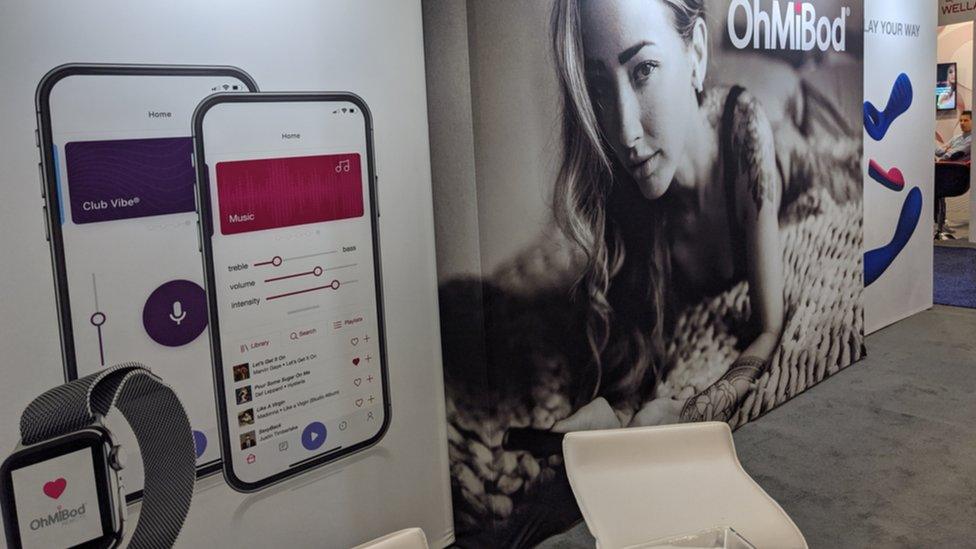
OhMiBod has a range of app-controlled sex toys
It has been at the expo every year since.
Founder Suki Dunham recalls with amusement one year when it had described its product as being wireless, and found itself placed in the connectivity section of the show as a result, sandwiched awkwardly between Verizon and Yahoo.
She remembers that sex at the show was once more about erotica than gadgets.
"AVN [Adult Video News] used to have a section that was part of CES," she recalls.
"A lot of tech that came about then was because of the sex industry and in particular porn.
"It's [now] on a different level. It's about sexual health and wellness with a real understanding about female pleasure."
Back in the sex tech corner is Crave, whose jewellery doubles up as small vibrators.
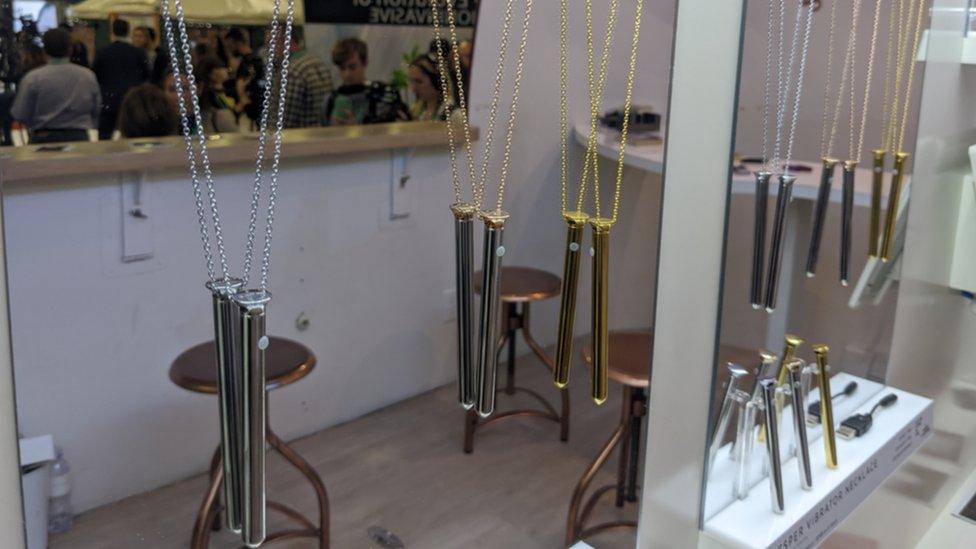
Crave is exhibiting at CES for the first time
This is its first year at CES, having previously been rejected.
"They said, 'we don't have a category for you'," says co-founder Michael Topolovac.
"We didn't think that was an honest answer. They didn't want anything to do with sex and pleasure.
"But they invited us in this year, and we're thrilled to be here. We hope that's a changing tide."
Chief designer Ti Chang tells me that when CES vetted the firm's booth material it vetoed a sticker containing a four-lettered profanity. Other sex tech firms tell me similar stories.
"We just follow the rules," shrugs Ms Dunham.

The main cluster of sex tech booths is at the edge of the Health and Wellness zone, next to the toilets
But is health and wellness the right place for sex tech?
"We should be able to talk about sex and its impact on our wellbeing," says Carolina Milanesi, analyst at Creative Strategies.
"These products now have a lot of tech in them."
Ms Dunham and Ms DiCarlo think so too, but Mr Topolovac isn't so sure.
"We certainly think there's a health and wellness element to it, but it's much bigger than that."
- Published8 May 2019
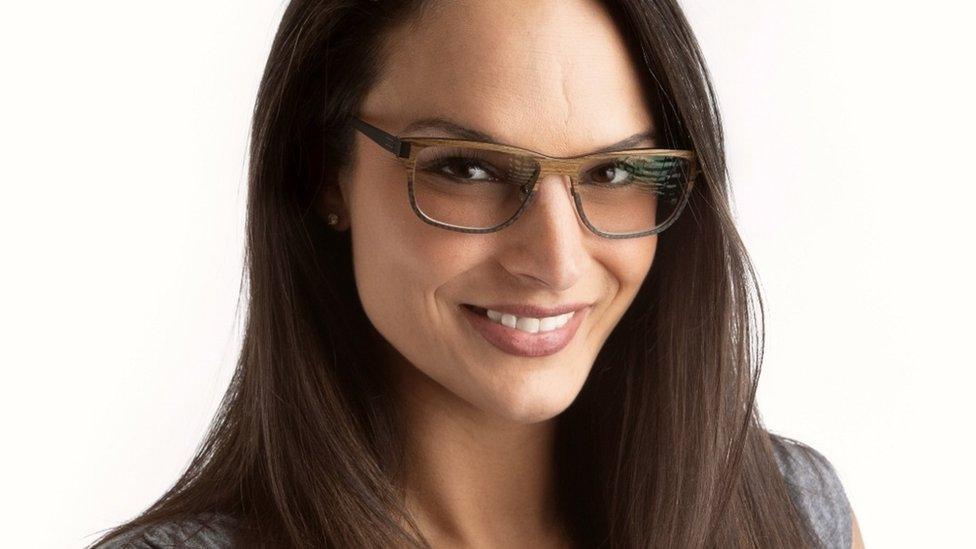
- Published4 January 2020
